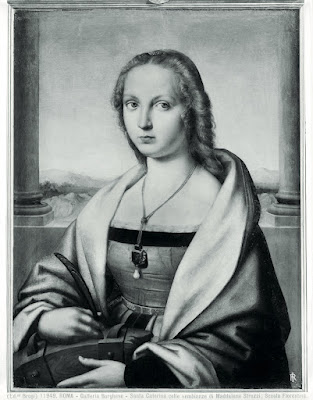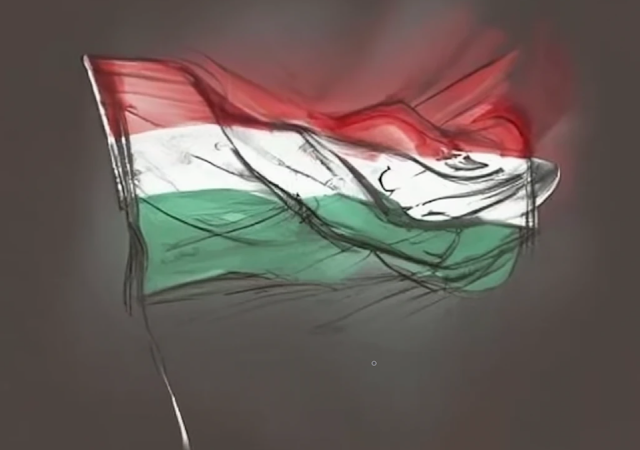20 PAINTINGS WORTH SEEING - PART I
I enjoyed art since I was
a child. I remember spending hours looking at reproductions of various
paintings from art magazines or books of artists from different countries,
mesmerized by the beauty of the silhouettes, porcelain faces, the folds and
colors of the fabrics or backgrounds. I was as well reading with curiosity about
the meaning of the paintings, the techniques used for applying paint to the canvas
or biographical details of their creators. I was as well painting and drawing
in my free time.
Visiting art museums is
an activity that gave me wings from a young age. Every time I visit a new city,
I check on internet what art museums are available and visit the ones that
include masterpieces which are appealing.
I want to share with you the
magic of twenty paintings which I consider outstanding. It was extremely hard
to choose so few masterpieces as the world is full of beautiful expressions of
the soul.
I am going to publish four blog posts. Each blog post will take you on a journey to five museums across the world, where you will learn about wonderful paintings.
1. JUPITER AND SЀMELÉ
“Jupiter
and Sèmelé” is my favourite symbolist painting, which I was blessed to see
during high school and about which I briefly talked about in my story from
“Ignite the Entrepreneur”. I mentioned it in the book because I was really
impressed by the complexity of the composition, the vivid colours and symbols.
It is one of the paintings which looks better in reality than in reproductions
and which I advise the readers of this blog post to see in reality.
“Jupiter and Sèmelé” was diligently prepared by making several sketches of the characters present in the artwork. Gustave Moreau, the French painter who envisioned and executed the artwork began in 1889 by sketching Sèmelé and a winged figure - Amor, the god of love or Bacchus, her son. The final version of the painting, considered the pictorial testament of Moreau, was completed in 1895.
The topic of the painting is mythological: Jupiter, the king of the gods, is in love with a young mortal called Sèmelé, who remains pregnant. Junona, Jupiter’s wife, due to jealousy, took the appearance of Beroe, Semele’s old nursemaid, to gain her confidence. She suggested Sèmelé to ask Jupiter to appear in his divine splendor, knowing it would be fatal for a mere mortal. The painting depicts exactly the moment in which the mortal sees her lover, violently struck by his divine thunder and lightning. Bacchus was quickly sewn into his father’s thigh and developed into a fully-grown baby there.
Jupiter
is depicted seated on his huge throne with the helpless and bloodied Semele
astride his right thigh. His head has a severe, wide-eyed, fierce gaze and is accompanied
by a huge red halo. His throne and the surrounding court include extravagant
architectural and vegetal elements which depicted in fine, realistic, even
jewel-like detail, give the overall impression of a dream-like fantasy world.
Vivid colors with dark shadows are predominant. Countless teeming gods,
goddesses and allegorical figures exist at different scales. Three figures can
be found at the feet of Jupiter: a figure of "Sadness" (cradling a
bloodied sword), Great Pan, the god with cloven hooves and a female “Death”
holding aloft a white lily. (Moreau: “At the foot of the throne, Death and
Sorrow form the tragic basis of Human Life, and not far from them, under the
aegis of the eagle of Jupiter, the great Pan, symbol of Earth, bows his
sorrowful brow, mourning his slavery and exile, while at his feet is piled the
somber phalanx of the monsters of Erebus and Night. Jupiter's right foot rests
on a snake biting its own tail. A frightful Hecate, with her polos and crescent
moon, appears in the lower left corner of the painting. A three-headed demon
and several winged, angelic figures also appear in the painting.
“Jupiter and Sèmelé” is exhibited in the Gustave Moreau Museum from Paris, France.
2. PORTRAIT OF YOUNG WOMAN WITH UNICORN
The
composition of the artwork is placing the figure of a lady in a loggia opening
out onto a landscape. The painting was apparently inspired by Leonardo da
Vinci’s “Mona Lisa”, finalized in 1503-1506. Initially a portrait of woman, it
later transformed into the portrait of Saint Catherine of Alexandria. The face
of the lady is extremely finely painted by Raphael, who succeeded to create the
Venetian shine of the blond hair. The unicorn symbolizes chastity in medieval
romance and was later attributed to the saint’s martyrdom. The colour of the
clothes, the skin and the hair of the lady harmonizes very well with the
columns, the sky and the hills in the background.
It is
unusual that there are no rings on the woman’s fingers. It is uncommon because
female portraits of that time were usually created on a wedding occasion.
Moreover, she holds a tiny unicorn in her hands, which symbolizes purity.
According to medieval legends, only a virgin could tame a unicorn. The Lady’s
unicorn appears fragile, as a brown baby bird. This gives her the essence of
motherhood. The tiny mythical creature leans into a velvety soft crook of her
arm.
The painting
is extremely detailed and realistic, with a luminous quality that highlights
the intensity of the subject's gaze and gives the work a compelling sense of
immediacy.
The painting can be seen in Galleria Borghese from Rome, Italy.
“Terrace of a Café at
Night (Place du Forum)” is an artwork of the Dutch artist Vincent van Gogh,
finalized in 1888. It was one of the first nocturnal scenes painted by the artist
during his stay in Arles, a quaint village in the South of France. The painting
raises questions for most viewers, such as how it was made or what does it
mean.
The Café is illuminated
with sulfur pale yellow and citron green. Van Gogh painted the view looking
south towards the lit terrace of the famous coffee house. He was wearing a hat
with candles, so that he could properly see while painting.
The sky during the night
is not black, as usual. It is blue instead and it highlights Van Gogh’s unique,
huge star motifs. He painted the stars exactly as they appeared on the night of
16 or 17 September 1888.
He contrasted the
brightly lit yellow Cafe with the darkness of the rue du Palais, which led up
to the wall of buildings and towards the tower of a former church.
The light from the shop
windows and some green branches of the trees surrounding the place is visible
on the right side of the painting.
The artwork of Van Gogh is part of the Kröller-Müller Museum from Otterlo, Netherlands.
4. THE LIGHT OF THE WORLD
“The Light of the World”
is the first painting of religious inspiration of the English artist William
Holman Hunt in 1953, as part of the Pre-Raphaelite movement. The painting shows
the figure of Jesus outside during the night, who is preparing to knock on an
overgrown and long-unopened door. It is depicting the verse Revelation 3:20:
"Behold, I stand at the door and knock; if any man hear My voice, and open
the door, I will come in to him, and will sup with him, and he with Me".
The door in the painting
has no handle, and can therefore be opened only from the inside, representing
"the obstinately shut mind".
There are several versions of “The Light of the World”. The version in the photo is exhibited in the side chapel at Keble College, Oxford, United Kingdom.
5. JUDITH
“Judith” is a Renaissance painting finalized by
Giorgione in 1504. The artwork depicts the famous Biblical scene from the Book
of Judith.
According to the story, a Jewish
widow from the city of Bethulia, called Judith, seduces and then decapitates
the Assyrian general Holofernes, who was besieging their city.
Giorgione’s “Judith” is a beautiful
princess, chaste and emotionally unmoved, stepping on the livid head of
Holofernes on the ground. She holds a giant sword in her left hand in the
manner of a cane while, in the act of stepping, she uncovers her left leg up to
the middle thigh. She wears a scarlet one-piece dress elegantly embroidered at
the neckline and under the shoulders.
The face of Judith is serene.
Fume-like curls fall from under her ears over a perfect neck and down from an
impeccable coiffure on top of which is a diadem. Another diadem is on her
chest. She is marked as a princely figure of adamantine virtue, entirely
undisturbed in body and spirit by the presumably violent act which she has
recently executed. Even the long sword beside her, largely concealed behind her
dress, bears only the gory reflection of her splendid dress and not a trace of
actual blood.
The oak tree on the right is a
structural element that enables the verticality of the painting and which can
be found in other paintings of Giorgione.
The painting can be seen in Hermitage Museum from
Saint Petersburg, Russia.
I hope that you enjoy the first five paintings. If you know interesting details about the masterpieces that are not mentioned in the blog post, please feel free to add them in the comments of the blog post or contact me privately. Moreover, please share a list of five paintings that you love, so that I can learn new things. Thank you very much.
REFERENCES
Mari Pictori, no. 14, p. 16-17
https://en.wikipedia.org/wiki/Jupiter_and_Semele
http://www.worldsbestpaintings.net/artistsandpaintings/painting/183/
https://musee-moreau.fr/en/node/8
https://eclecticlight.co/2020/03/30/gustave-moreau-and-symbolism-jupiter-and-semele/
https://collections.mfa.org/objects/32558
https://en.wikipedia.org/wiki/Caf%C3%A9_Terrace_at_Night
https://www.vangoghstudio.com/cafe-terrace-at-night-by-vincent-van-gogh/
https://joyofmuseums.com/museums/europe/netherlands-museums/kroller-muller-museum/cafe-terrace-at-night-by-vincent-van-gogh/
https://krollermuller.nl/en/vincent-van-gogh-terrace-of-a-cafe-at-night-place-du-forum-1
Mari Pictori, no. 25, p. 14
https://en.wikipedia.org/wiki/The_Light_of_the_World_(painting)
https://en.wikipedia.org/wiki/Young_Woman_with_Unicorn
https://borghese.gallery/collection/paintings/portrait-of-young-woman-with-unicorn.html
https://www.thehistoryofart.org/raphael/portrait-of-a-lady-with-a-unicorn/
https://www.ladykflo.com/lady-with-a-unicorn-by-raphael-raffaello/
https://www.nicholashall.art/artwork/portrait-of-a-young-woman-with-unicorn/
Mari Pictori, no. 46, p. 12-13
https://en.wikipedia.org/wiki/Judith_(Giorgione)
https://arthistory.co/judith-giorgione/











Comments
Post a Comment